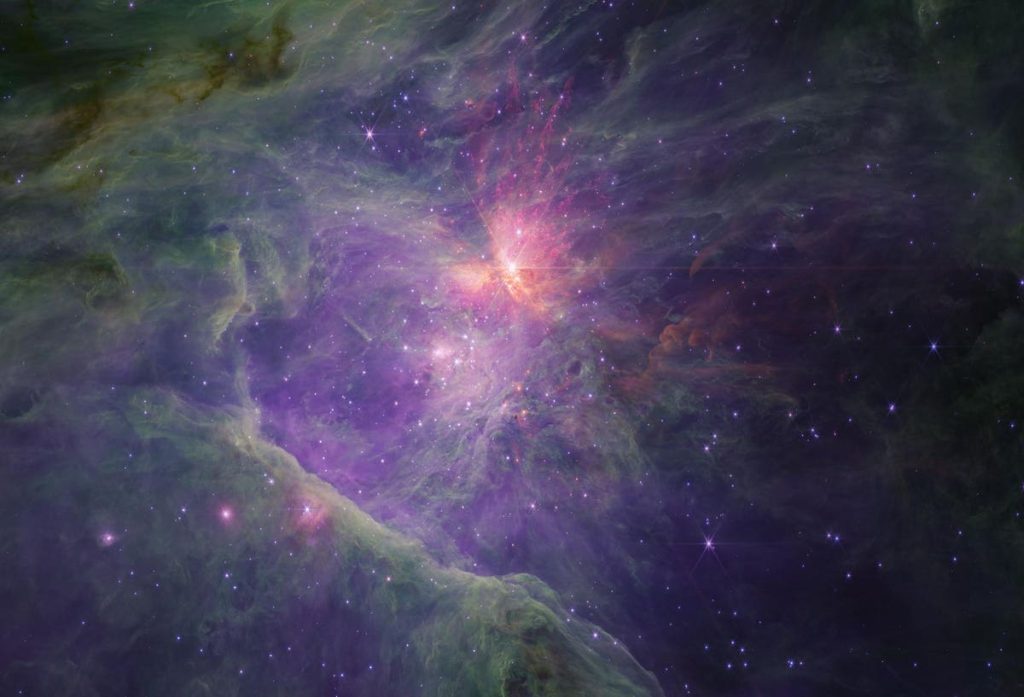Arguably the night sky’s most impressive naked eye sight (after a full “Super Harvest Moon,” perhaps) has been imaged by the James Webb Space Telescope—and in unprecedented quality.
Captured in 21,000 x 14,351 pixels mosaic—a stunning 301 megapixels—the subject is the inner Orion Nebula, also called M42. The new image of the famous nebula also contains bright “explosion fingers,” thought to be the remnants of two massive stars colliding at least 50 years ago.
The image is so detailed that for the first time it’s also revealed hundreds of rogue planets floating freely in space. They appear to range in size from about 13 times the mass of Jupiter to just twice the mass of smaller Saturn, according to the European Space Agency.
Orion Nebula Explained
M42 is one of the first objects every new stargazer should look at when it becomes visible for six months around November. It can be seen as a bright cloudy patch hanging just below the famous Orion’s Belt shape of three bright stars. A diffuse cloud of gas and dust, it’s around 1,300 light-years from our solar system.
It’s the place in our cosmic neigborhod where stars are being born. It’s a mere million years old—a blink of an eye, cosmically speaking—and contains all kinds of stars, large and small. Now we know there are planet-sized objects there, too.
How JWST Got The New Images
The image, which was taken by JWST and made available on the European Space Agency’s ESASky application, are among the largest mosaics ever made using the space telescope’s NIRCam camera.
It’s not the first time JWST has imaged M45, but this new version is a much wider-angle image that includes the inner Orion Nebula and its Trapezium Cluster of stars.
NIRCam sees the night sky in infrared light—wavelengths of light that human eyes can’t see—so filters are used to translate its data into the visble light you can see here.
Orion Nebula In Infrared
One of its images captures short wavelength light and one long wavelength light. They each reveal different wavelengths of light reflected from ionized gas, hydrocarbons, molecular gas, dust and scattered starlight. Featuring in both are purple, green and red nebulosity—gas and dust which goes on to form stars—as well as thousands of stars.
Here’s where to download both in full 301 megapixel resolution:
ESA also published a slider tool to make it easy to see the differences between the two images.
‘Explosion Fingers’ Explained
Zoom in to the most colorful part of the short wavelength image and red “explosion fingers” become obvious. They’re jets of gas outflowing from an explosion estimated to have occured about 50 to 100 years ago in what astronomers call a molecular cloud (dense clouds of dust and gas in deep space) behind the nebula.
The hydrogen jets’ redness comes from the immense energy created by the explosion, possibly caused by the collision of two young, but giant-sized stars.
Wishing you clear skies and wide eyes.
Read the full article here








